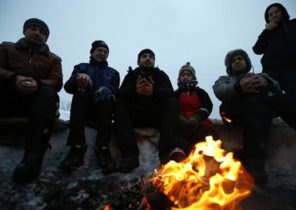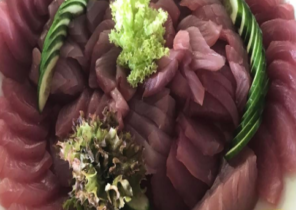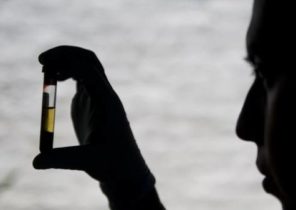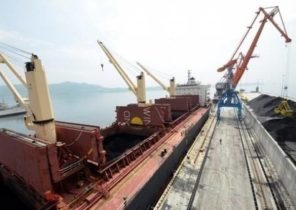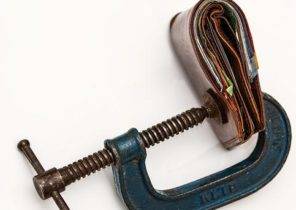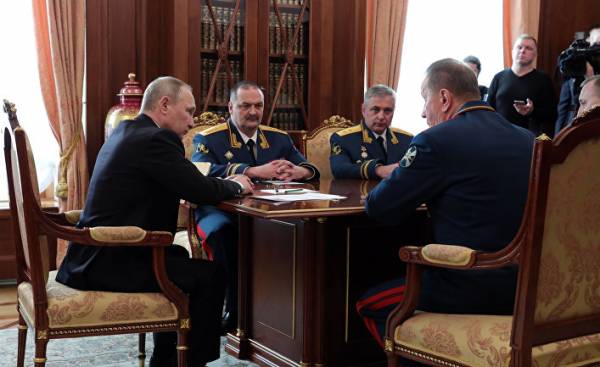
In 2006, a book by Russian writer Vladimir Sorokin “Day guardsmen”. When it in 2008 published in the Swedish language, she received the name “In the service of Holy Russia”, which led to the loss of the meaning of the original title and its reference to the story of Solzhenitsyn’s “One day of Ivan Denisovich”, the germ, from which then will increase the description of the Gulag.
As Solzhenitsyn, Sorokin tells of a grotesque system — the oprichnina — through observations and actions of one man during an ordinary day. The reader watches, how is a normal working day of a public servant of Andrei Danilovich in the winter of 2027. His work? Killer, rapist and looter. Oprichnik. Sorokina Russia — corrupt, brutal and savage. Around it built a wall that separates the country from the outside world, as in the literal sense and the figurative and it is ruled by the autocrat, whose power is not limited — with God and his guardsmen help.
When the book came out, it was rated as a dystopia or satire on contemporary Russia, but over time it began to seem more and more prophetic — for example, in 2027, according to Sorokin, Crimea is part of Russia. Now we know that it is 2014. Recently references to the oprichnina are becoming more common when the Putin regime is analyzed as his supporters and opponents. So what is this concept and why is it actualized?
Speaking schematically, the oprichnina — a state-parasite, where the initial state (“zemshchina”) — an animal on which the parasite lives. The primary function of the oprichnina is to ensure the loyalty of the elite and protect the system from internal enemies. The new elite — guardsmen that have nothing to do with the old power structures — elected leader and is exempt from any responsibility, receives extraordinary powers and access to all the wealth, how can she even reach. In return, this elite must be absolute loyal to the ruler and to destroy all opposition movements, regardless of what they speak. The status of Oprichnik, wealth and life itself, however, only depend on the good will of the ruler, and at his signal all can in an instant stop.
The prologue to the historical oprichnina of 1565-1572 year, perhaps the most terrible state-legal experiment in history, began on 3 December 1564, when Ivan IV (the terrible) gave up the throne. He left Moscow with all his household to the great surprise of the inhabitants. And horror. The fact that Ivan skillfully played on the fear of possible chaos. Very soon it came delegations from various classes, to Express to Ivan his faithfulness and pray that he returned to the state Board.
Ivan, who was at his estate in Alexandrov Sloboda, allowed himself to be persuaded and relent. But not without conditions. He demanded and received the mandate, which meant that the laws, religion, traditions — all were under his authority. Ivan staged a coup, and put forward another requirement — to have your own oprichnina. The term can be translated as “separate”, “special”, and more so in the middle ages meant a lot that stood out to noble widows, while the rest was distributed among the sons of the deceased. The requirements of Ivan, and he divided the country into two parts: the oprichnina and zemshchina.
The oprichnina received the leadership and the army, and reported directly to Ivan the terrible, like she was his property. The Church, as well as the main part of the army belonged to the zemshchina, they kept the old structure and was controlled by the boyars in Moscow, which was also responsible before the king. Oprichnina covered the richest of the city’s best pieces of land and the most profitable trade. And to Finance it, the domains were subject to devastating harsh taxes.
Why Ivan started the oprichnina, a matter of controversy, but there is no doubt that it was a powerful tool of terror. Reliable figures of how many people were then killed, no, but well describes the oprichnina event that happened in Moscow on 25 July 1570, it gives an idea of how familiar and large-scale violence. Then there was a four-hour Orgy during which the guardsmen were just drunk with the blood. While it killed 116 people, including women and children, the most brutal ways: one is impaled, someone pulled out the ribs, who stripped the skin alive. In the end, the king personally cut the throat of the sick man, whom he stabbed several times with a spear and dagger.
Like nomadic theatre, Ivan traveled around the country with the guardsmen and set their pathological performances with demonstration trials as Overture. First kill the members of the old aristocracy. But sometimes suffered the whole city. The most striking example is the massacre of inhabitants of Novgorod in 1570, which eventually broke the once flourishing trade of the Republic. The outbreak of violence during the oprichnina was largely a consequence of the tendency of Ivan to paranoia, but also a political manifestation. Executions and violence, it seems, was the way Ivan repeatedly demonstrated to myself and the environment that it is above any rules set by humans, whether written or unwritten. At some point in 1572 oprichnina ceased to exist, but it is unclear no documents left. Dual administration of the country were abolished, and the army was again United. Most of those who have been in prison, was released and received back their property.
The first reign of Ivan was marked by reforms, economic prosperity and territorial expansion — in many ways, it was then laid the Foundation of the Empire, which will appear later. But the oprichnina he almost crushed the project of the Russian Empire in the Bud. Terror and suffering had devastated the country economically, morally and socially for generations. Despite this, the oprichnina became a model for later rulers, who wanted to solve their problems. First comes to mind, obviously, Joseph Stalin.
Stalin’s entourage testified that he spoke often of his historical relationship with Ivan. He saw the similarity between complex relations with their nobles and their own strained relations with the leaders of the Communist party. As Stalin and Ivan was obsessed with the idea of cleansing the country from internal enemies — “enemies of the people” and “traitors” respectively — and both had their elite workers, supporting the purity of the NKVD and guardsmen respectively.
In 2012 was organized by the “Izborsky club”, a think tank and meeting place for supporters of Eurasianism. This ultra-conservative ideology with Messianic overtones suggests that Russia must be restored in the form of Empire based on one country and claim their destiny as opposed to Western doctrines, and in particular liberalism and democracy.
One of the founders of the club, historian Andrei Fursov, a Russian describes history as an eternal pendulum movement between the oprichnina and time of troubles (chaos), which is the latest example of Yeltsin’s 1990s. He believes that the concept of the oprichnina was and remains a condition for Russia’s modernization.
Sociologist Alexander Dugin, the first representative of Eurasianism, although it has commonly been called the unofficial chief ideologist of the Kremlin, is critical of the current system. He sees a corrupt and incompetent elite major threat to Russia. That’s why he wants it changed for a new one. Since democratic elections and the rule of law is a Western idea, Dugin recommends to introduce a new oprichnina, to revive the system. And from the ranks of the opposition political spectrum, many argue that it is a fait accompli.
Putin began his journey in the role of President, gathered a loyal group of associates with which he was able to do away with those structures of power and to form a new system. This elite was awarded far-reaching freedom from responsibility and the right to use the accumulated resources of the Russian people as an ATM machine — today many of the old colleagues and acquaintances of Putin among Russia’s richest people.
Before that, fed with oil, the Russian economy has for some time is in a state of anorexia and vitamin deficiency as consequences of unilateral diet let know. And when the regime could no longer base their legitimacy on the growing wealth, Russia has entered a stage of mobilization.
The Kremlin did some digging in the rubbish heap of history and brought out various historical artifacts. Russia again threatens from within “fifth column” and “foreign agents” and Western countries are entering a conspiracy to crush the country — a narrative that makes Ivan the terrible and Stalin approvingly nod. Last year, the newly formed national guard of 400 thousand people were placed under direct control of Putin, and in may he signed a decree which gives the commander of the national guard the right to dispose of the army. This law Putin is well insured from the coup regime.
Of course, the analogy between how pathologically staged cases state a paranoid despot 16th century, and modern Russia can be conducted only up to a certain limit, especially considering that entered into a rank of state Institute of terror that was used by Ivan and Stalin, no.
But a political ideology with roots reaching to the young state of Muscovy, which Ivan turned to the Russian paradigm, remains a constant in Russian history. He argued that the leader as a person — the guarantor of stability rather than strong state institutions, and this meant that the rights, duties, penalties, awards, and possessions were governed by them, not by laws or other official structures. Ivan suppressed any criticism against such an order, equating it to betrayal and dealing with it accordingly.
It is this concept — more than Marx — formed Soviet Union. And similarly, continues to shape today’s Russia.
